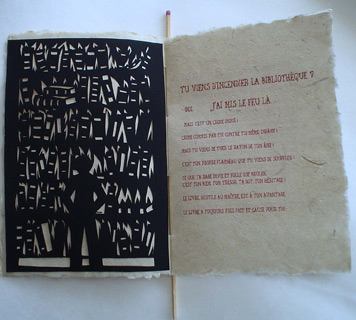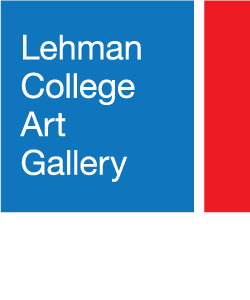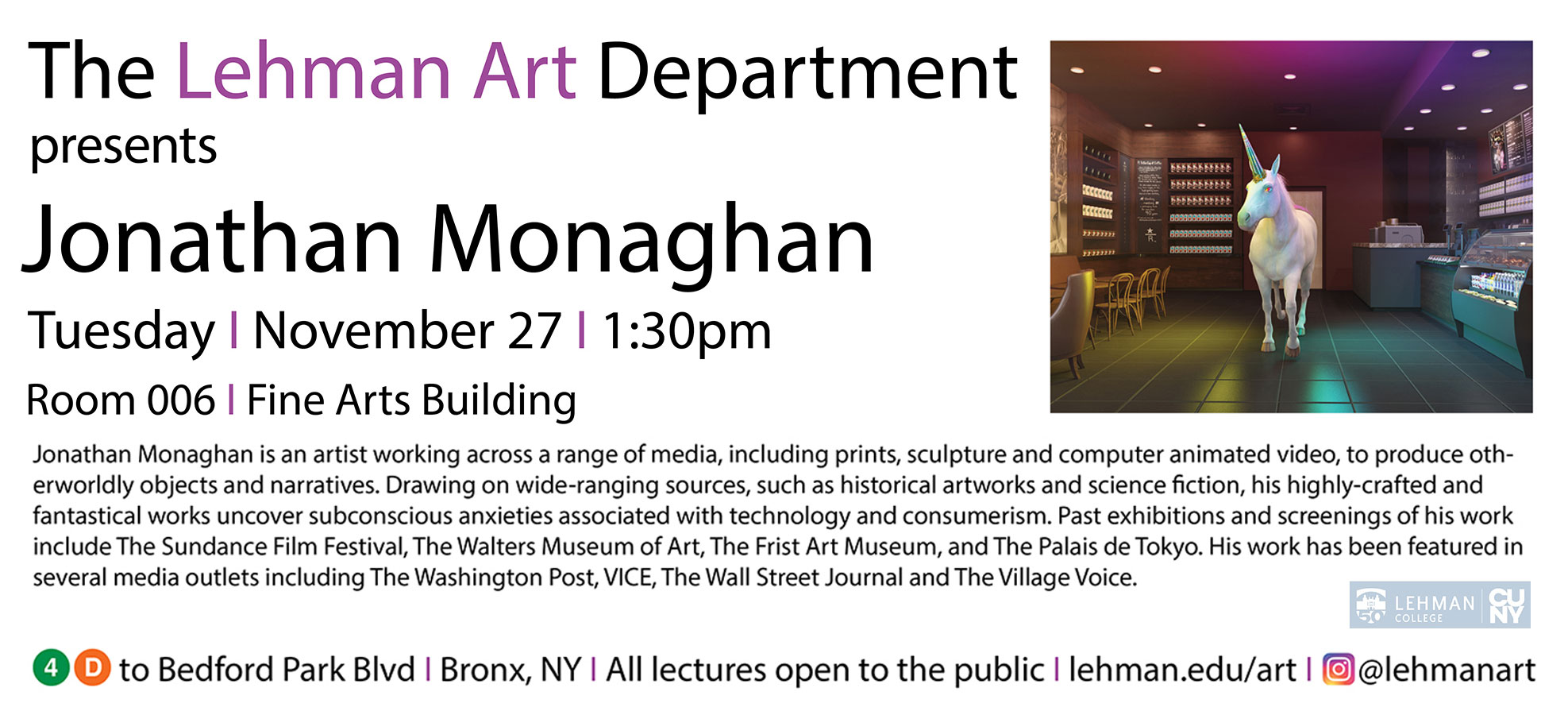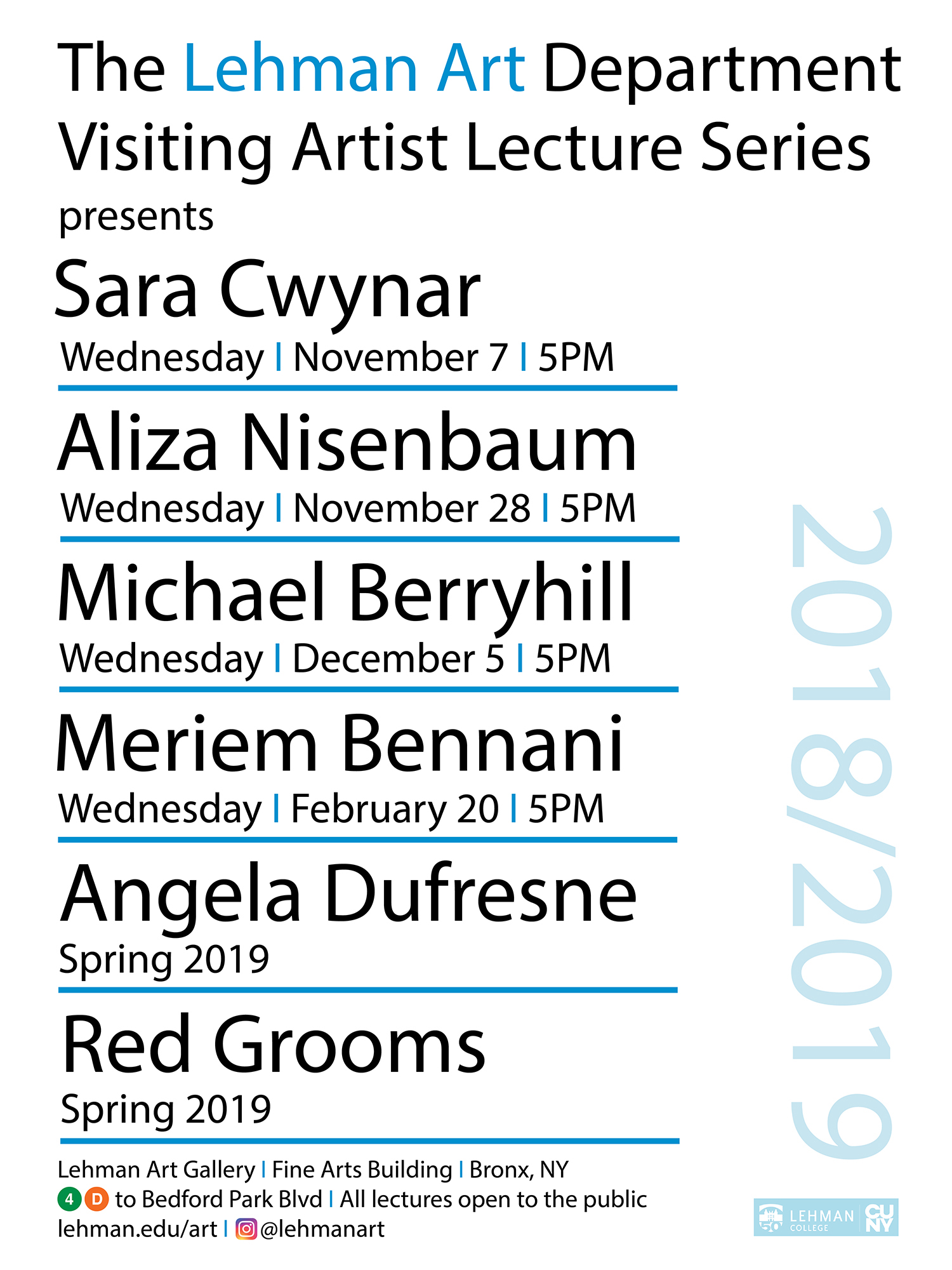Rare Editions
The Book as Art
Lehman College Art Gallery is pleased to present RARE EDITIONS: The Book As Art. The exhibition presents a selection of work by 15 contemporary artists who use the book form as a container for their ideas, feelings, and aesthetic sensibilities. The exhibition includes unique one-of-a-kind objects, limited editions, and unlimited multiple editions. Many of the works are hybrids incorporating painting, drawing, printmaking, collage, photography, sculpture, installation, and performance. The artists in RARE EDITIONS use a host of inventive strategies as they manipulate color, line, shape, pattern and texture and make decisions about type if text is part of their work. This wide variety of book structures includes accordions, single folds, scrolls, boxes, pop-ups, fans, tunnels and altered books. Content is as varied as format with artists exploring narratives inspired by poetry, literature and myth, aspects of the natural world, history and politics, the environment, biography and identity, and personal and aesthetic issues.
RARE EDITIONS: The Book As Art presents the work of 15 contemporary artists who use the book form as a container for their ideas, feelings and aesthetic sensibilities. The content they explore is expressed through a variety of artistic materials and processes using both traditional and innovative book structures that might or might not incorporate text as well as two and three-dimensional imagery.
An “artist’s book” or ”bookwork” is an artwork in book form in which visual elements; documentation, writing, and the artist’s practice and craft come together. Today, artist’s books are at the crossroads of global art with multidisciplinary strategies of painting, sculpture, drawing, collage, photography, printmaking, installation and performance as well as theater, dance, music, and digital technologies and media. As critic Lucy Lippard has written, “Artist’s books can be all words, all images and are a hybrid of exhibit, narrative and object.”(1) Like any art form, they are of their time and place and are especially accessible as they invite a diversity of intents and approaches.
Artist’s books can generally be categorized as unique one-of-a-kind objects or sculpture, limited editions or unlimited multiple editions published in large numbers. Many of the artists in RARE EDITIONS work primarily in the book format while others mostly use other media. The exhibition is comprised of unique books/sculptural objects and limited editions done between 1964 and 2008 with installations by Doug Beube and Robbin Ami Silverberg created especially for this exhibition. We are fortunate to have an anthology from the Fluxus group of experimental artists who helped formulate important ideas about artist’s books in the early 1960’s, which helps to place the work in RARE EDITIONS in context.
Artist’s books, a 20th century form, began with the livres diarists in Paris when artists and poets were commissioned to create lavish limited editions of prints or portfolios by publishers and art dealers. Dada and Surrealist artists wrote and illustrated their own poetry and experimented with collage and typography for manifestos, pamphlets, treatises, books and periodicals. Between the World Wars, avant garde artists in England, Germany, Italy, Russia and Latin America continued to experiment with new forms of written text, printmaking, collage and book binding for small editions that disseminated ideas and forged links with like minded groups.
By the 1950’s and early 60’s, new ways of thinking about the book were developed in Europe by Dieter Roth who deconstructed the book by punching holes in it and using organic materials. In the United States Ed Ruscha created, published and disseminated the first multiple art work, a book edition of 400 that were all considered originals, bypassing both galleries and publishers. Fluxus artists and composers, working in Germany and Japan as well as in the United States in the early ‘60s, were interested in blending art forms, chance, found elements and collaborating on the creation of events, performance art and festivals as well as books, boxes and multiples that centered around printed cards, games and random ideas. The social and political unrest and activism of the ‘60’s was reflected in the development of Conceptual Art which challenged the status quo by breaking distinctions between art and life and by democratizing the art object. Conceptual artists documented their ideas through writing systems and strategies, diagrams, photography and performance. These practices were central to the art of Sol Lewitt, Lawrence Weiner, Bruce Nauman and many others. The photocopier, off set and other new printing technologies enabled visual artists to become writers as well as publishers producing low cost widely available books.
Since the 80’s, all forms of artist’s books have proliferated with an increase of unique book objects as well as unlimited editions and low cost “zines”. An artist’s book support system has grown around the country with: artist’s book archives and collections by museums and libraries; exhibitions at museums and galleries; the teaching of all aspects of the book at arts centers, colleges and universities with some with degree programs; artist’s book stores; the development of small presses, publishers, and even some galleries and dealers specializing in artist’s books. There is also a lively dialogue about artist’s books in all their variety, approaches and techniques through, conferences, seminars, fairs, newsletters, web sites and list-serves as well as critical journals and books about books. Far from being replaced by technology, artist’s books have made innovative use of electronic tools and the Internet to thrive and evolve.
The artists in RARE EDITIONS use a host of inventive strategies as they manipulate color, line, shape, pattern and texture and make decisions about type if text is part of their work. Their content includes: fairy tales; family stories; memory; autobiography; journeys; nature; the cosmos; history, politics; human rights; war; feminism; the body; sickness, and death. The most familiar structures are the codex (pages bound on either the right or left), the accordion and the single page book, which is cut and folded. Others formats include the dos-a-dos (two texts bound to a common cover), pop-ups, scrolls, flags and tunnels– all with many variations and combinations. Commercial and hand-made paper is seen throughout this exhibition, as are all types of paint, drawing materials, fiber, fabric, glass, and leather, metal, plastic and found objects. Collage and assemblage are much used along with photography, self-printing (copiers, computers, linocuts, woodcuts), offset printing, collaboration with small print workshops (monotypes, etchings, lithographs, etc.) and with larger commercial printers. Electronic technology is part of planning and researching many artist’s books as it is also used as a printing process. Artists who work with installation and performance are also concerned with time and space as they integrate two and three-dimensional materials with literature, dance and theater.
Brian Bellot, a collector of images, is a collagist whose dense, unique “illuminated manuscripts” play with found paper fragments, color, pattern, games of all sorts, and music’s repetitions and vibrations. He alters books, especially cardboard children’s books, to act as frames for pages that express a sense of fantasy, play, discovery and humor.
Doug Beube, reacting to world events and celebrity culture, alters books by cutting and twisting them into complex mixed media sculptural installations that focus on the need for collective wisdom in a world of chaos, uncertainty and constant transformation. Sections of the Encyclopedia Brittanica sit inside vinyl suicide vests contrasting knowledge with disaster and his carefully researched “portrait” of k.d. Lang uses zippers as a metaphor for the singer’s complexity and as a structural element to easily add new life chapters.
Collaboration is central to the artistic practice and working process of Phong Bui who creates mixed media installations and is also a curator, writer and publisher. In On the New York-Hawley Bus, an unbound book in an edition of 25, the poems of Raphael Rubenstein become part of a complex juxtaposition of color, text and line in a continuously changing sensuous experience as pages unfold and change.
In her artist’s books, wall scrolls and public art, Beatrice Coron translates the traditional technique of cut black paper silhouettes on a white background into vivid interpretations of poetry, history, and worlds of memory and imagination. In Fleurs d’Insomnie images and words both parallel and extend Haitian poet Franketienne’s thoughts about insomnia.
The Thrill Came Slowly, based on the words of Emily Dickinson, is the first artist’s book created by Lesley Dill who is known for her exploration of language and the body through sculpture, performance pieces, and other works on paper. In this piece, the artist layers her photographs with the text on a skin-like translucent paper conveying a sense of fragility and embodying the psychological states of both despair and euphoria.
Nicholas Dumit Esteves, a performance artist concerned with the body, creates a fictitious relationship with one of his three dentists in an accordian flag book that will become a limited edition. Using the book itself as an interactive space, the artist’s 32 letters reveal much about his life in the South Bronx and elsewhere as he obsesses about fillings, tar, root canal, extractions, infections, pain, hard foods, making appointments, costs, and other dental anxieties.
In her scrolls, book objects and other work, Anne Gilman’s abstract drawing and invented writing explores the hidden self and the public self. Bone Scan is a final portrait of her father on medical examining paper revealing his lung cancer and her letters to him after he died. Debris is concerned with the emotional upheaval of attempts to take stock and throw away what is no longer needed: negative memories; uncertainties; doubts, fears, and a sense of displacement.
Scott McCarney uses the ephemera of his own and his parents’ lives — souvenirs, family photos, postcards, to-do lists, recipes, and ordinary collectables such as baseball hats and special plates — to create intimate autobiographies that evoke memory and the experiences of remembering and forgetting, collecting and discarding. His dos-a-dos printed book bind two texts to a common cover with all memories carefully saved in a velvet drawstring bag.
Sabra Moore’s “minimalist novels” synthesize the storytelling and quilt making traditions of her west Texas family into codex and accordion books printed with a photocopier and hand coloring and transfer techniques. Woodsman and Race/Erase recount the murder of her grandmother’s second husband and the secrets of her multi-racial heritage in language fragments heard as a child. In the unique book, Closed Book/Cut Trees, 22 brown paper bags are sewn together in concern about trees and environmental and social issues that also inform the artist’s constructed paintings, sculpture and installations.
Miriam Schaer’s sculptural books use the form of actual women’s and babies clothing to echo the vulnerabilities and secrets of their wearers and become containers for memory, feelings about the female body, and the frailties and complexities of human relationships. A wedding dress is an altar with an “instructional” trousseau while discarded gloves are collected and sewn together becoming pages in an enormous book of souls that resonate with recognition, embrace, and surrender.
Robbin Ami Silverberg, in her installation created for this exhibition, explores the physical, psychological and symbolic power of the act of writing by reflecting on her mother’s inability to write and subsequent loss of identity, and through her invitation that viewers add words to a special collaborative book-in-progress. A master papermaker who uses this medium as an expressive vehicle, the artist combines translucent abaca with pulp painted graphite text with cut out sections to further extend the act of writing into real space.
Susan Share’s innovative book objects, performance props and apparel possess a kinetic energy, an elegant grace and a sense of wonder achieved through her engineering skills and the adaptations of traditional bookbinding techniques with strong sculptural forms. Her artist’s books open and unfold revealing rich color, complex layers of pattern and texture, stitched connective elements, and an unexpected variety of found objects. As in Zip Off Fence, her pieces simultaneously expand into space and contract and can be contemplative or active.
Clarissa Sligh’s artist’s books layer her writing with photography, drawing and printmaking to create narratives that weave the personal with the political and reframe life experiences and family memories. The social justice and human rights issues her work address includes the integration of schools (It’s Not Little Rock recalls the artist as plaintiff in a class action law suit in Virginia), feminism, sexism and the challenging of values to encourage dialogues towards transformation and change.
In her accordion and single folded page books, Kiki Smith explores the fragile interdependence of nature, mortality and regeneration through experiments with printmaking. Tidal, the 13 phases of the moon and a continuous rolling wave, connects the pull of celestial bodies to the reality of human affairs, while Companions, one of the artist’s interpretations of Little Red Riding Hood, presents a feminist perspective on the conflicts between wolf, child, predator and prey, ally and adversary.
Michelle Stuart’s sculpture in book form reflects upon the passage and continuity of time and the human condition by capturing the essence of journeys through ancient sites and reflections about transcendent experiences. These conceptual, meditative text-less “diaries” use found materials, pulverized dirt, powdered pigment, encaustic (wax), twine and muslin-mounted rag paper soaked in soil. A painter and sculptor, the artist’s fascination with the symbolism of the book also extends to ledgers, scrolls and pages of nature specimens.
It is wonderful that RARE EDITIONS is helping to celebrate the 25th anniversary of the Lehman College Art Gallery and their important work. I am very thankful to Director Susan Hoeltzel for her invitation to organize this exhibition and her endless support, and to the artists, galleries and collectors who have generously shared their work with us. And, a special thanks to Susan Share who introduced me to the journey and discovery of artist’s books.
Susan Fleminger
Guest Curator
1) Lippard, Lucy R. Six Years: The Dematerialization of the Art Object From 1966 to 1972. New York: Prager Publishers, 1973



